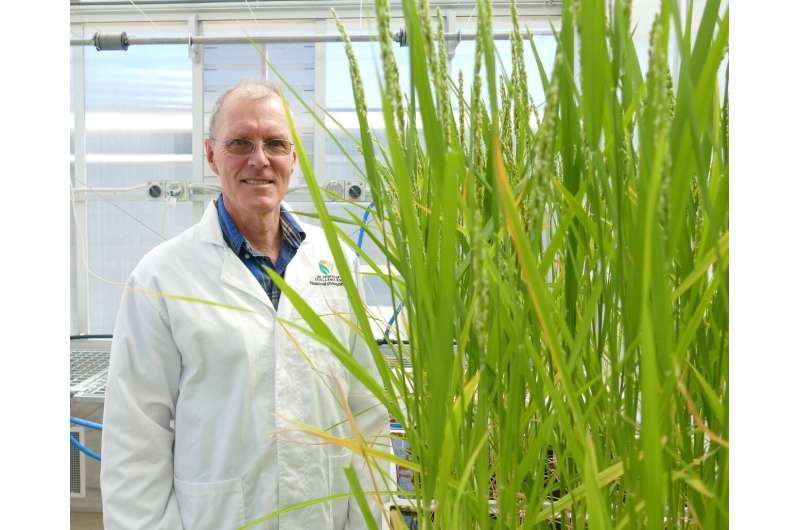Struggling for breath: Getting carbon dioxide into cells for photosynthesis

During photosynthesis, leaves capture carbon dioxide (CO2) from the atmosphere and transform it into organic compounds. However, getting from the leaf surface to the enzymes where carbon is fixed inside leaves is full of challenges. Understanding how each of the many obstacles CO2 molecules encounter in their frantic adventure to fixation is essential, if we want to manipulate them and improve crop production.
In a Tansley review published this week in the journal New Phytologist, Professor John Evans from the ARC Center of Excellence for Translational Photosynthesis, reviewed the literature published on leaf mesophyll conductance and created a "leaf profile" of the different components that are involved in the CO2 journey inside the leaf and their relative importance.
"We need to know what is the relative importance of features such the surface area of mesophyll cells, the thickness of the cell wall and the permeability of the membranes within the cell, to determine how easy it is for carbon dioxide to move to the sites of fixation," says author Professor Evans from the Research School of Biology at the Australian National University.
"Carbon dioxide consumed during photosynthesis is replaced by diffusion, but this is restricted by stomata and the mesophyll tissues inside the leaf. These restrictions influence how much water and nitrogen are required to fix carbon," he says.
Professor Evans identified four key questions related to cell wall and membrane properties where research effort needs to be focused.
One of them related to the type of photosynthesis plants use. "In C4 plants, like sugarcane, like sugar cane and maize, carbon dioxide only has to reach the cytoplasm, whereas in C3 plants like wheat and rice, there is an additional hurdle moving into the chloroplast which effectively doubles the resistance," says Professor Evans. Within C3 plants, there is a lot of variation associated with how thick the cell walls are. Cell walls represent less than a quarter of the total resistance in crop plants like rice which have thin walls, but they account for more than three quarters of the total resistance in slower growing C3 plants which have thicker, less porous walls.
Another question focuses on stomata, the millions of mouths that cover leaves, allowing water and carbon dioxide in and out of each leaf. Stomata can open and close to vary the resistance to water and carbon dioxide exchange. The resistance associated with the mesophyll has also been observed to change when light, carbon dioxide concentration or temperature varies, suggesting that mesophyll conductance is also dynamic. However, some of these dynamic changes may be a consequence of spatial complexity rather than rapid changes in, for example, membrane permeability.
Finally, the paper highlights an exciting field of research on the role of carbon dioxide permeable aquaporins, a highly diverse type of "filter" embedded within cell membranes, that control carbon dioxide transport. Aquaporins are under intense investigation as they are a potential engineering target to increase photosynthetic efficiency.
More information: John R. Evans. Mesophyll conductance: walls, membranes and spatial complexity, New Phytologist (2020). DOI: 10.1111/nph.16968
Provided by ARC Centre of Excellence for Translational Photosynthesis



















